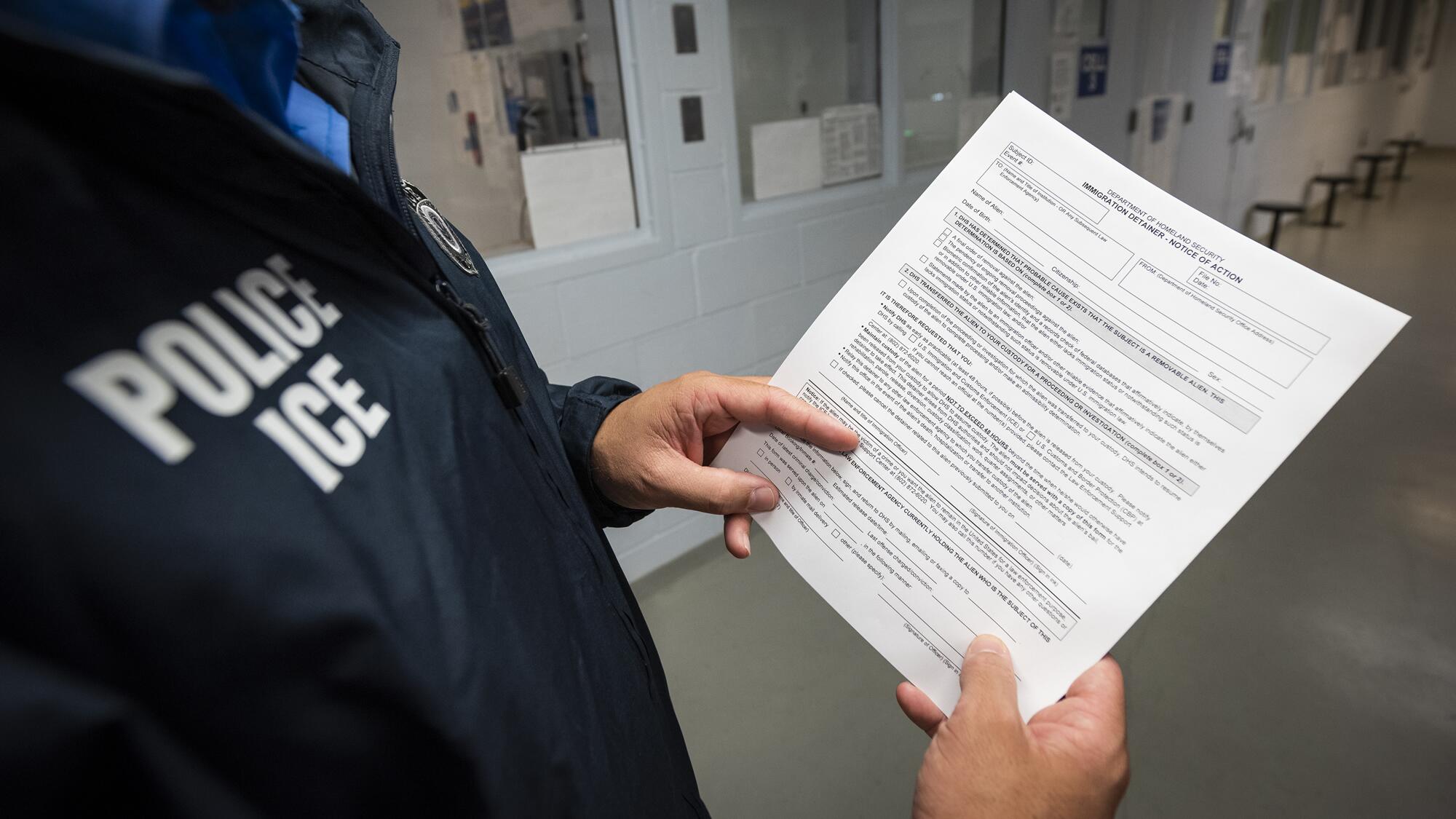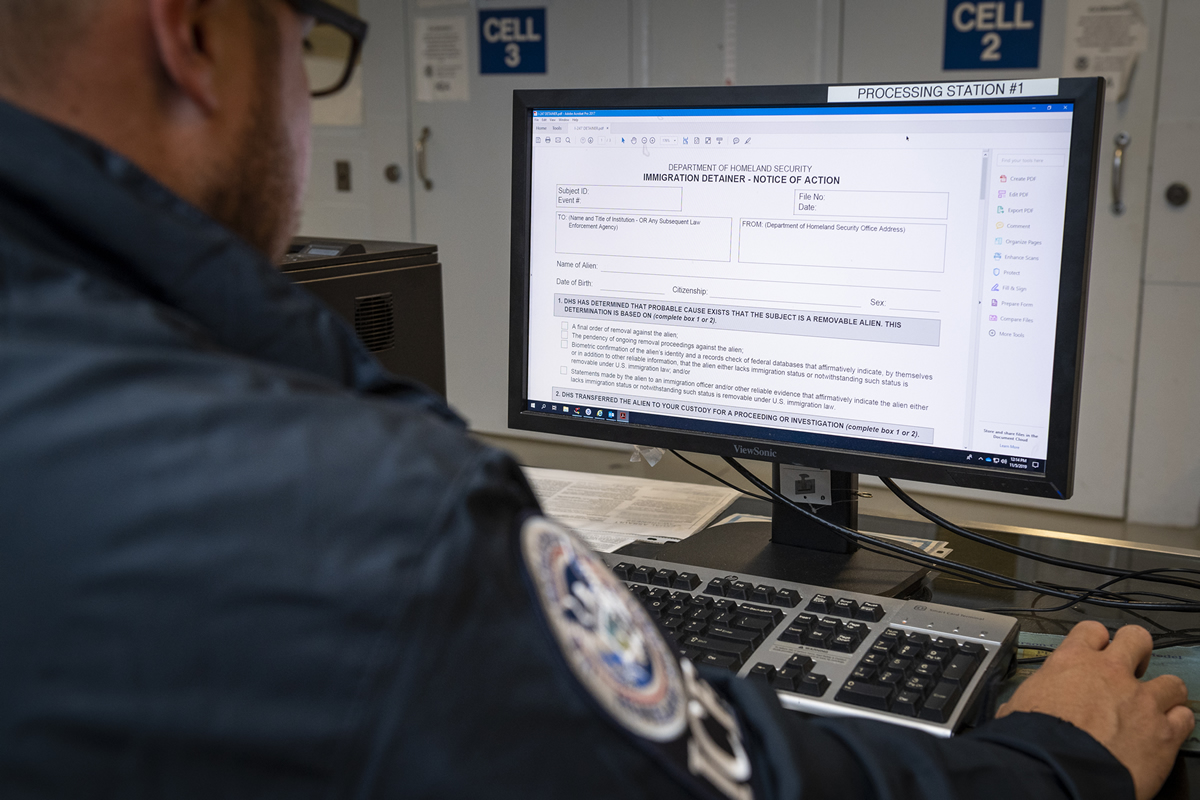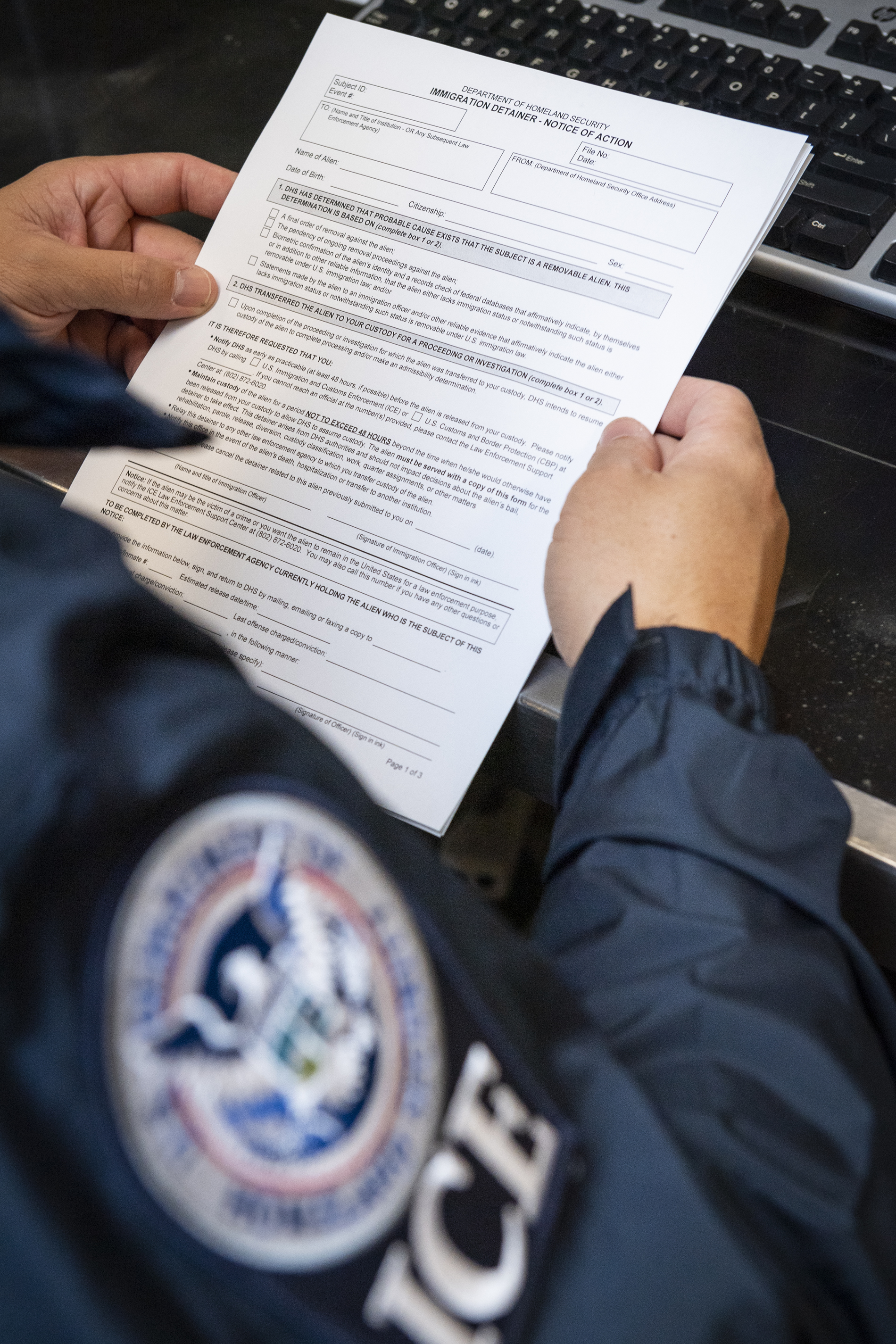
Intro
Whenever possible, ICE works closely with local law enforcement partners to enhance public safety by keeping criminals off the streets. Detainers are an effective tool in keeping criminals out of local communities by allowing ICE officers to take custody of criminal non-citizens within the confines of a jail.
What is a detainer?
U.S. Immigration and Customs Enforcement (ICE) lodges detainers on individuals who have been arrested on criminal charges and who ICE has probable cause to believe are removable non-citizens. The detainer asks the other law enforcement agency to notify ICE before a removable individual is released from custody and to maintain custody of the non-citizen for a brief period of time so that ICE can take custody of that person in a safe and secure setting upon release from that agency’s custody. When law enforcement agencies fail to honor immigration detainers and release serious criminal offenders onto the streets, it undermines ICE’s ability to protect public safety and carry out its mission.
For decades, immigration officers have used detainers as a collaborative law enforcement tool to request critical law enforcement cooperation. Notifying ICE of the upcoming release of an non-citizen who has been arrested for a criminal violation unrelated to their immigration status underscores the importance of information sharing between partners who ultimately share the same goal – to serve and protect our communities.

As noted above, the detainer serves as a both a request for advance notification of release and a request to hold the subject for a short period of time, enabling ICE to take custody.
ICE issues detainers based on a finding by a trained immigration officer that there is probable cause to believe an individual is a removable non-citizen.
Like all law enforcement agencies, ICE considers all evidence at its disposal to determine if probable cause for removal exists, including various databases and electronic data. Probable cause is the same legal standard that other law enforcement agencies must meet to make an arrest.
It is important to note that not everyone interviewed by ICE is detained or removed (deported). Everyone receives due process, and ICE focuses its resources on removing criminals and public safety threats.
To that end, ICE collaborates with all law enforcement agencies to help ensure that non-citizens who may pose a public safety threat are not released onto the streets to reoffend and potentially harm individuals living within our communities. However, in some cases, state or local laws, ordinances or policies restrict or prohibit cooperation with ICE. In other cases, jurisdictions choose to willfully decline ICE detainers or requests for notification and release removable non-citizens back into the community.

Declined Detainers
When criminal non-citizens are released from local or state custody, they have the opportunity to reoffend. ICE must then expend additional, more extensive resources to mitigate potential risks and make arrests in a community setting. Often, ICE is unable to locate a released non-citizen before that individual commits another crime. It is safer for everyone if ICE takes custody of an non-citizen in the controlled environment of another law enforcement agency as opposed to visiting an non-citizen's residence, place of work, or other public area. Arresting a criminal in the safety, security, and privacy of a jail is always the best option.
ICE has made approximately 140,000 arrests this year, three quarters of which resulted from cooperation between ICE and its law enforcement partners at local jails and prisons. ICE's at-large arrest teams made the other 25 percent of arrests. At-large arrests require significantly more time and resources than making arrests within the safe confines of a jail.

